This is the London dwelling of John Martin Robinson, aesthete, architectural historian and controversialist. He holds the offices of Maltravers Herald Extraordinary, Librarian to the Duke of Norfolk and Vice Chairman of the Georgian Group ( tho he has just resigned on a point of principle). He is also a regular contributor to Country Life and a Lancashire landowner. His friends call him ‘Mentmore,’ after the huge Victorian country house built for the art collector and banker Baron Mayer de Rothschild, and sold up in the 1970s.
JMR is the author of a lot of outstanding books about country houses and architecture, many of them published by Yale. But in 2006 he produced a memoir of his childhood and early youth, Grass Seed in June, that was very different from anything he had written before. The quotations below are drawn from this interesting work of autobiography.
‘As a family we were Tories and Catholics. I still am – in a not entirely straightforward way. …The Robinsons had married into old Catholic families on their return to Lancashire. The Elizabethan martyrs were close to us. I knew the fields at Brindle where St John Arrowsmith had been captured and taken away to be tried and executed. It was all very near and very exciting. One could not have enough of the gory details of barbarous executions. We were proud of these brave Elizabethan friends, neighbours and relations who had died for the Faith… In general I was useless at anything practical. A farmer told my father: ‘The trouble with that theer lad is he doan’t shape.’ I have never shaped. I don’t drive, I hate all games, I don’t type, I don’t take photographs. I can hardly dial a telephone. … A surprising number of architectural historians do not drive. They are too busy looking at buildings to concentrate at the wheel. I tried to learn but whenever I saw something interesting I tended to turn the car inadvertently towards it across the oncoming traffic…anyway, I loathe cars and the ghastly, selfish, atomised society they represent. Walking, buses and trains are morally better.’ 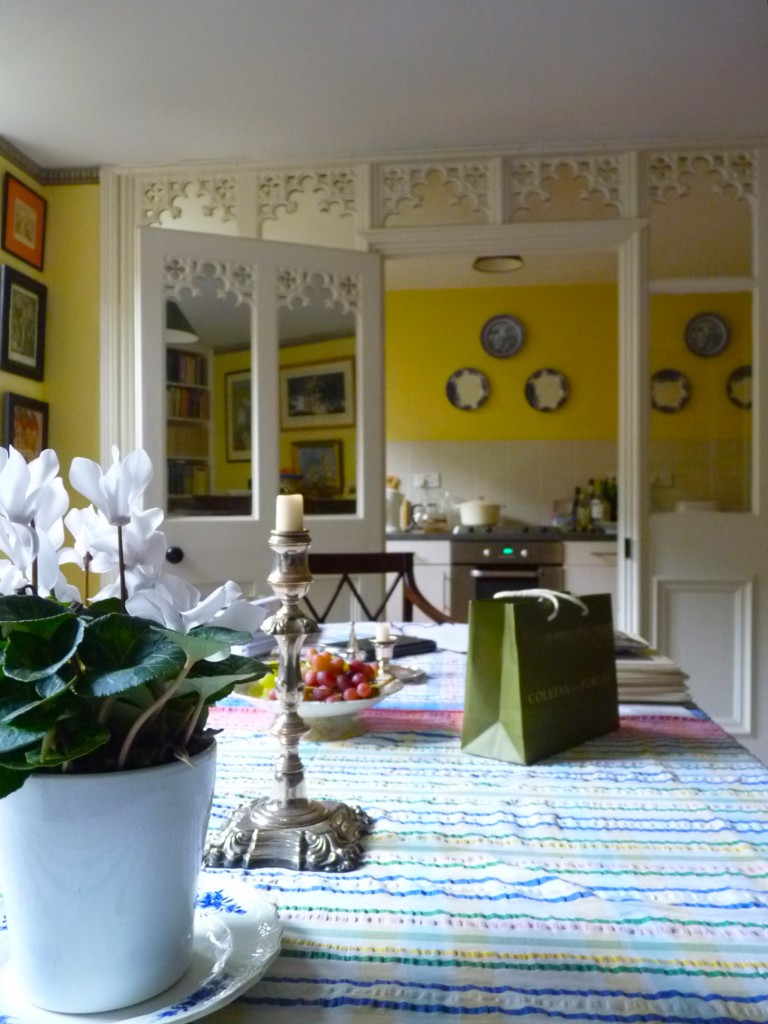
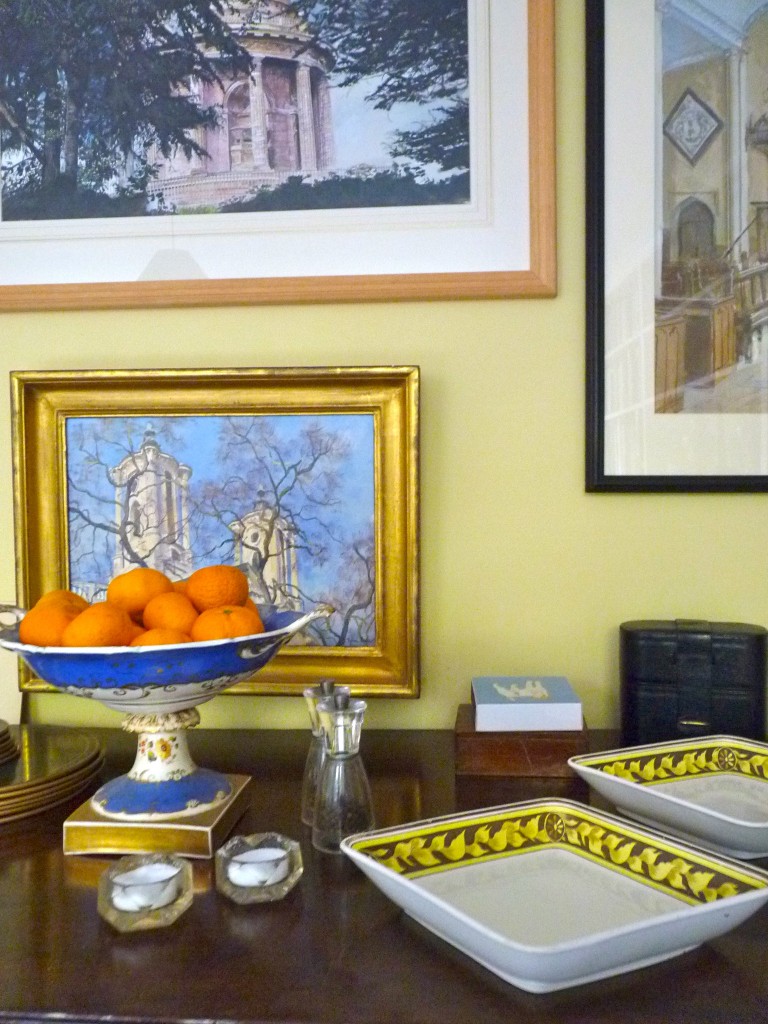

Here is the other end of the dining room, photographed in the wintry light of December 2013. The jolly nice 1790s mahogany chairs by Gillow came from an antique shop in Kirby Stephen in Cumbria.
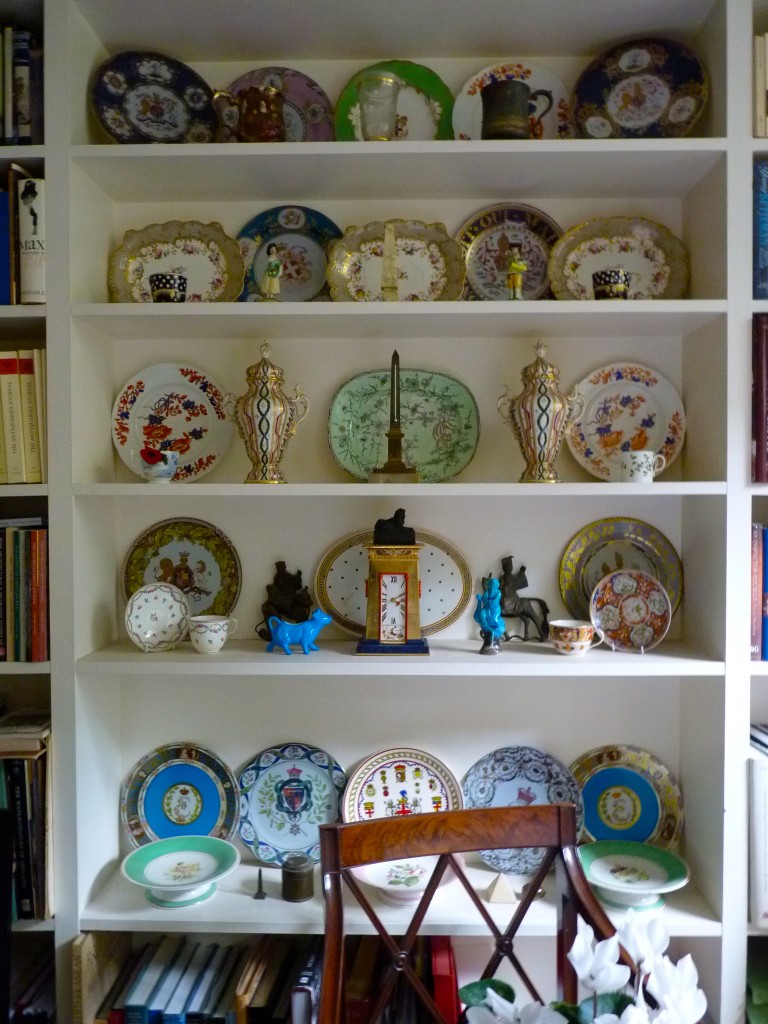
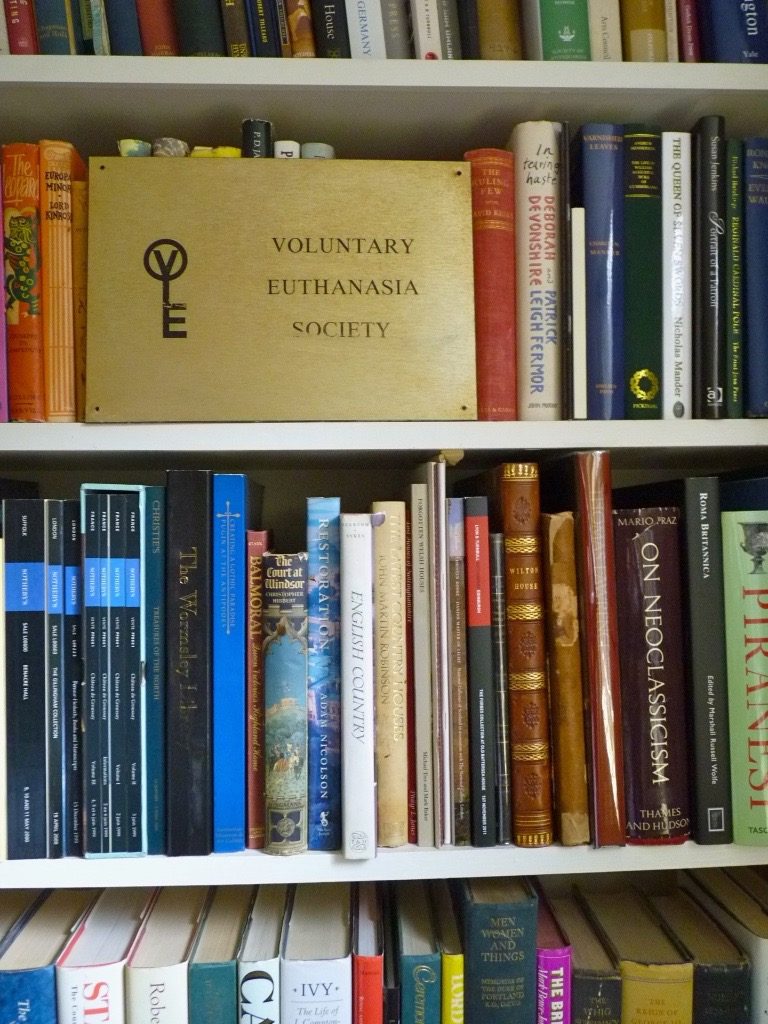
‘My real education came sideways through the three Ls – the liturgy, landscape and libraries. … now I discovered ‘Architecture’ and the Georgians in particular. Apart for Country Life, I can attribute it solely to one book, Ralph Dutton’s pioneering The English Country House (1934), in the Batsford series. The photograph of Wentworth Woodhouse, intriguingly described as ‘the largest of the genus,’ did it. As soon as I was able I was determined to go and see the place.’ How the plaque arrived here from its original setting outside the Kensington front door of the Euthanasia Society’s offices is not clear. JMR”S latest book, Requisitioned, features Wentworth Woodhouse on its cover.
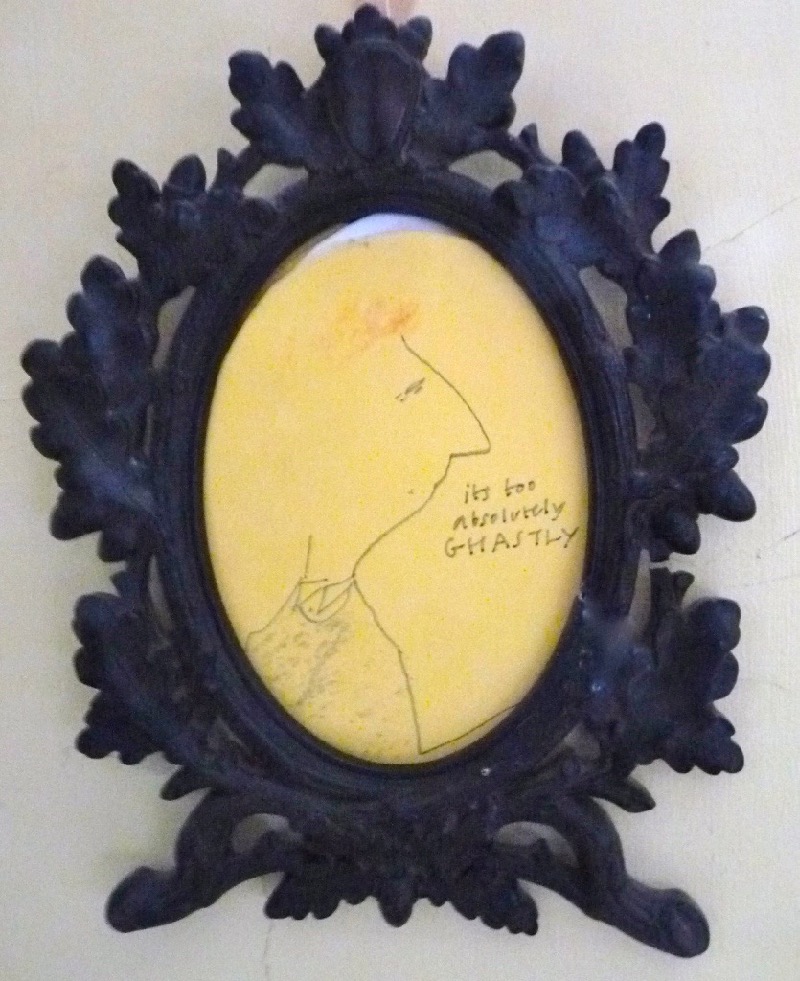
Miniature of JMR by his friend the artist and wit Glynn Boyd Harte, ‘It’s too absolutely GHASTLY,’ the original is mine and I framed this copy for him.
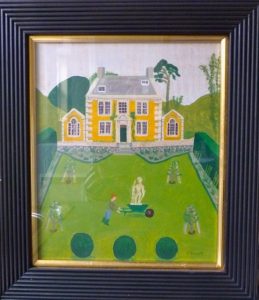
House portrait by artist and friend Caroline Bullock, Beckside House, JMR’s northern retreat
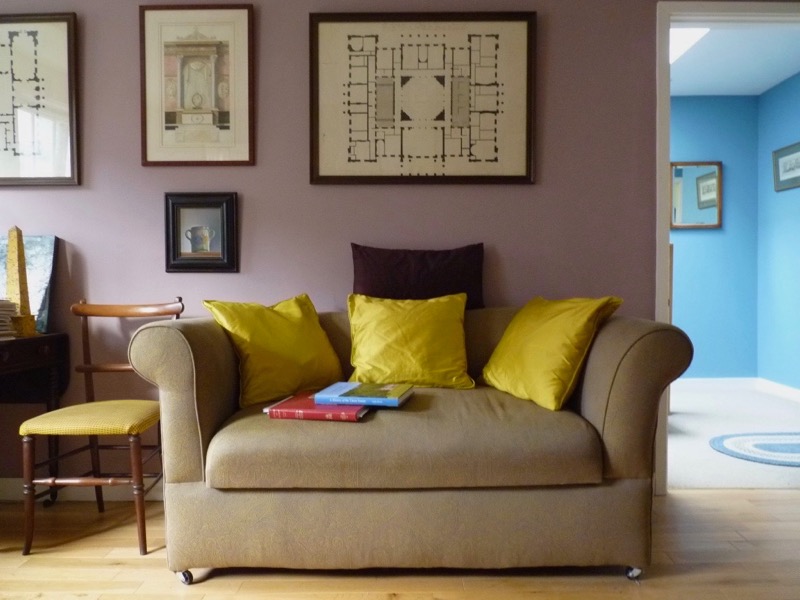 John is rather good at buying nice things and decorating the houses in which he lives. When he was wondering what career to take up, this seemed to represent a distinct possibility. Had he followed this through, he could have had secured a reputation as the shortest-tempered interior decorator in England, for he is red-headed and as he freely admits, ‘Redheads have one layer of skin less than normal people.
John is rather good at buying nice things and decorating the houses in which he lives. When he was wondering what career to take up, this seemed to represent a distinct possibility. Had he followed this through, he could have had secured a reputation as the shortest-tempered interior decorator in England, for he is red-headed and as he freely admits, ‘Redheads have one layer of skin less than normal people.
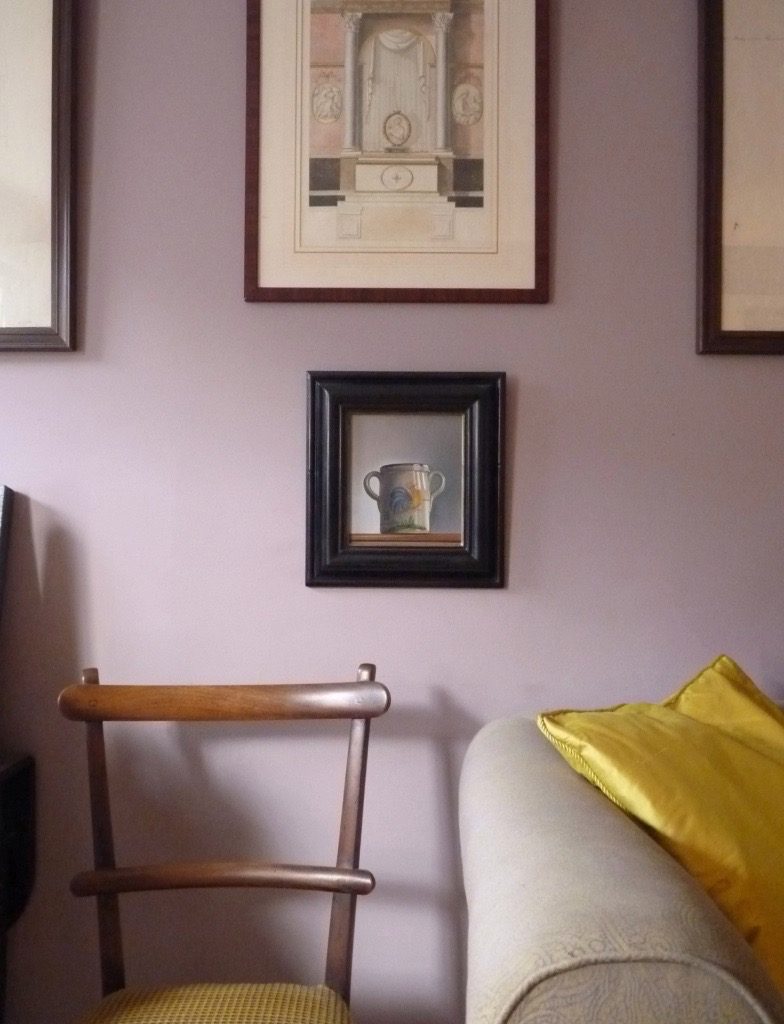
When JMR went up to Oxford he discovered that, ‘ many of the finest Georgian interiors had been redecorated by John Fowler or under his influence. His sort of approach is now frowned on, but it had much to recommend it, combining historical knowledge wit artistic flair and a good sense of colour and tone, too often lacking in later, over-researched restoration of historic interiors. At the the time Fowler was one of my heroes and I thought of working for him. He was encouraging, but sensibly advised me to stick to academe at least for the time being. He had a reputation for being difficult and overbearing but I found him kindness itself. He invited me to lunch in March 1970 and I spent the day with him at King John’s Hunting Lodge, a small, eighteenth century Gothick folly in north Hampshire which he had restored and used as his country retreat…. the whole place with its garden topiary, painted furniture and understated elegance struck me as the acme of civilised perfection.’ The Hunting Lodge is now the home of Nicholas Haslam, who has preserved the best of Fowler’s arrangements while making it yet more vivid and comfortable.
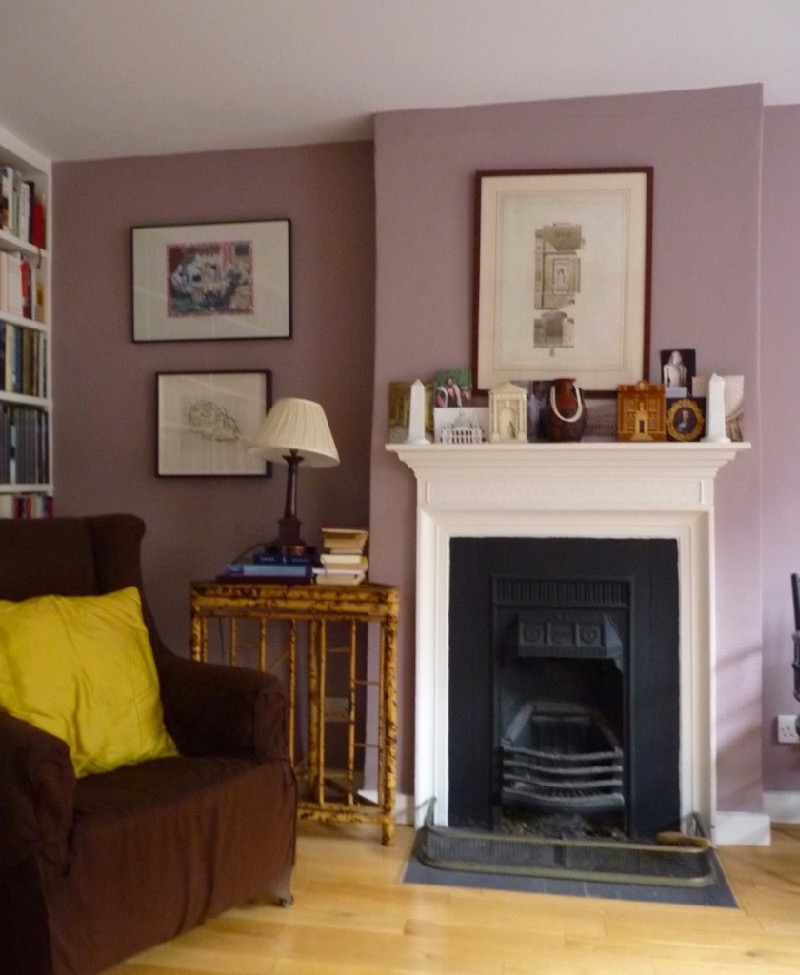
Sitting room chimneypiece
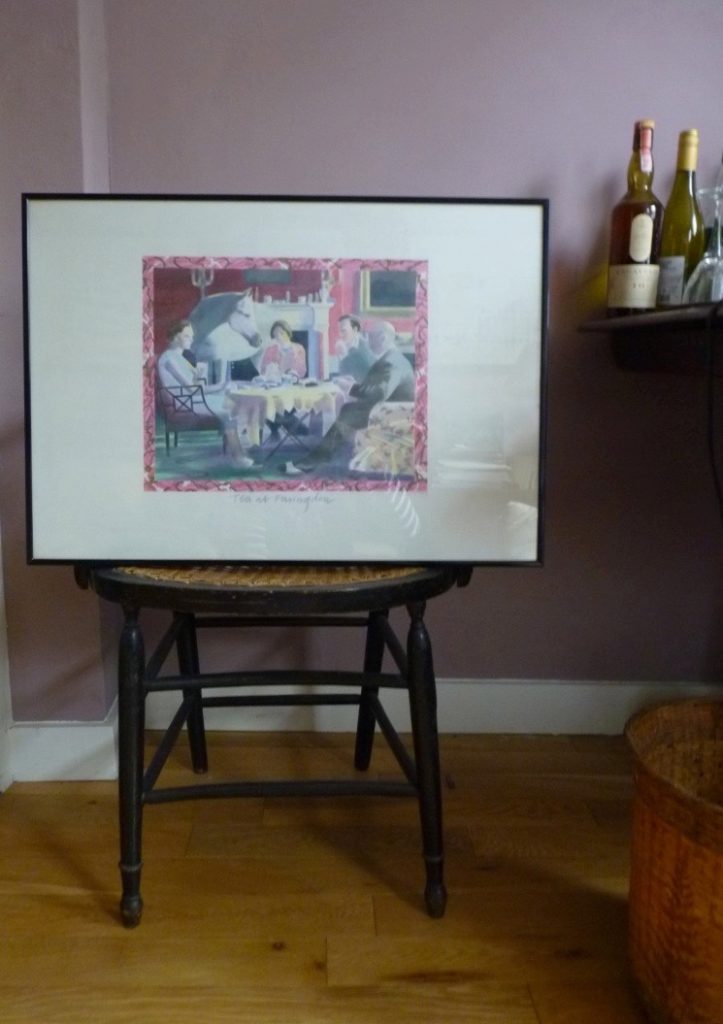
Glyn Boyd Harte’s lithograph, Tea at Faringdon, Lord Berners, Penelope Betjeman and her horse, Moti.
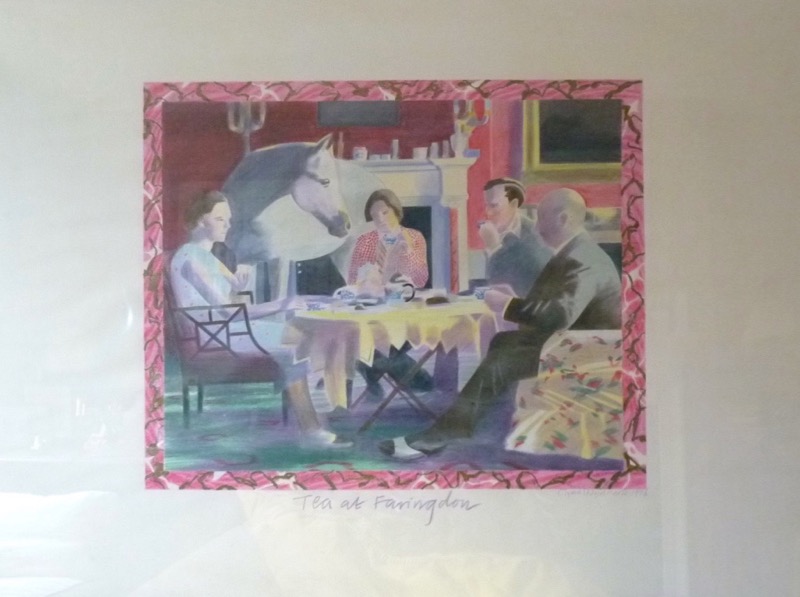
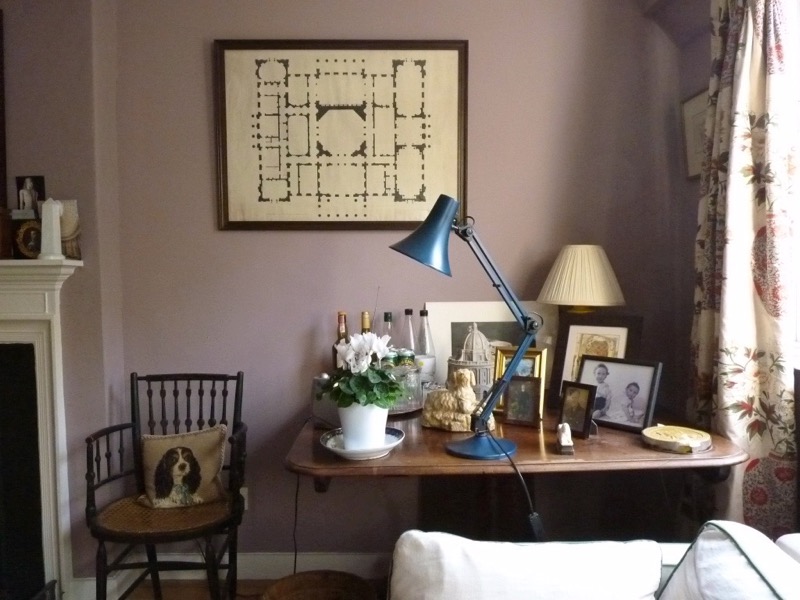
Sitting room corner with framed photographs
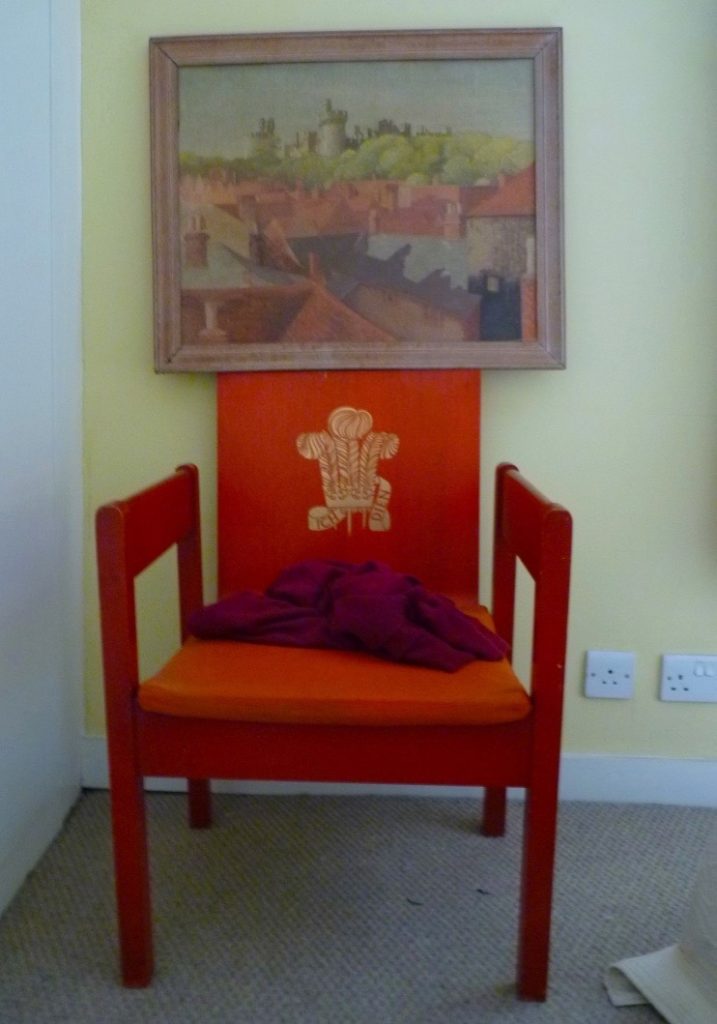
Here is a tomato soup-coloured chair (which I sold him) designed by Lord Snowdon and made for the Investiture of the Prince of Wales at Caernarfon Castle in 1969. Propped above it is a painting of the west Sussex town of Arundel with its castle, found for him by the Fitzwilliam Museum’s director Tim Knox at Portabello market. Every week on a Wednesday JMR catches the train to Arundel, where the towers and turrets of the castle hang over the town. Arundel Castle is one of the longest inhabited buildings in England and has been in the possession of the Howard family since 1138. A few years ago Julian and Isabel Bannerman designed a new garden full of curious 17th century conceits, in memory of the ‘Collector-earl’ of Arundel. JMR’s occupations there are essentially peaceable, usually taking place in the muniment room in one of the towers stuffed with documents going back to the 12th century, but his vision of England is of a country where martial tendencies are still latent :
‘In the course of the last three centuries of generally advancing tameness, the British deliberately and calculatedly kept alive and nurtured a primeval, male, barbarous streak in all classes as being best suited in the armed services, buccaneering and industrial-imperial life in general. ..This explains why the young British male, even today, is so much more of a violent, medieval, throw-back than his European, homogenized, social-democratic opposite numbers. Whenever I witness rampaging louts, glass-smashing yobs, vomiting football crowds, my heart swells with native British pride. We are not militarist, but we are warlike.’
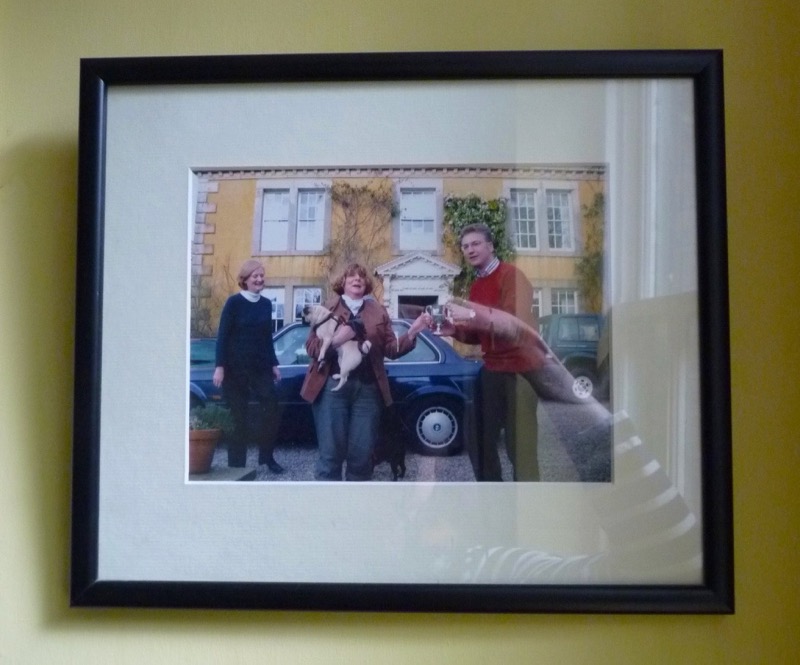
Melinda Patten, pug and friends at Beckside House

Last year, John Robinson published the research on which he has been working since he was an Oxford postgraduate, James Wyatt, 1746-1813, Architect to George III, and organised an exhibition ( with the Georgian Group) on the same theme in the famous Yellow Room at Colefax and Fowler. The colour on the walls of the Yellow Room was the inspiration of Nancy Lancaster, who bought out Sibyl Colefax when she retired, and John Fowler, paint wizard, who stippled many coats of paint on the walls and then glazed them, giving this electrifying sheen.

English Heritage lent chairs, tripod flower stands, demi-lune tables, a torchère and looking glasses from Heveningham Hall. They had been in store since the 1970s when the hall and its furniture were acquired from the Vanneck family by the government. Michael Heseltine, the Secretary of State for the Environment at the time, oversaw the transaction. The Department of the Environment failed to find a solution for the house, and it was sold again in 1981.
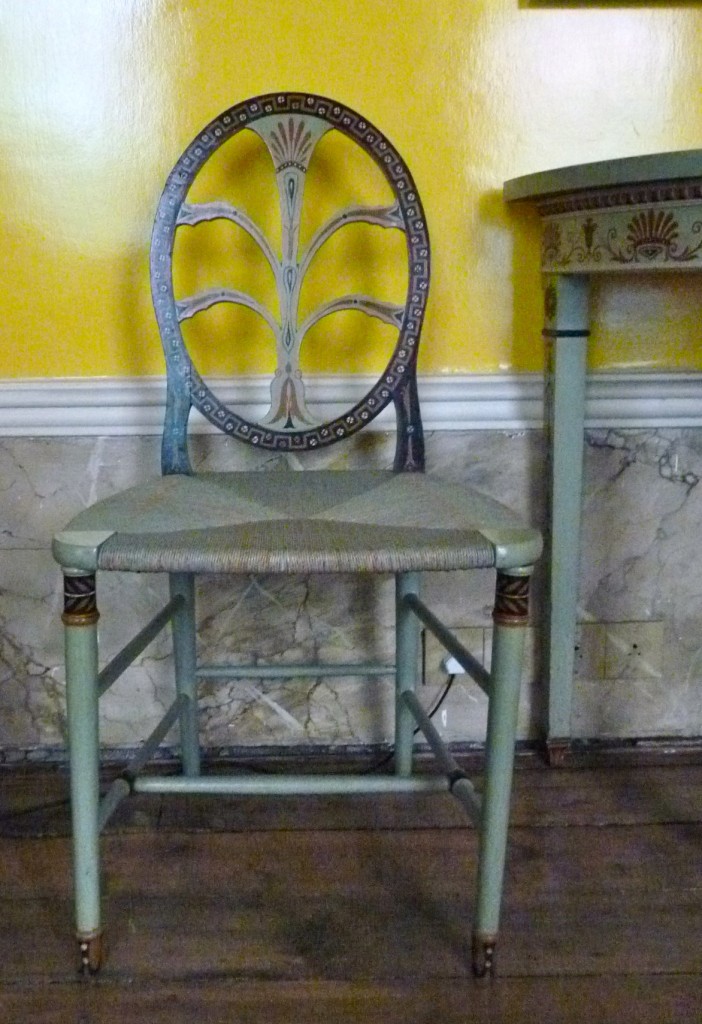
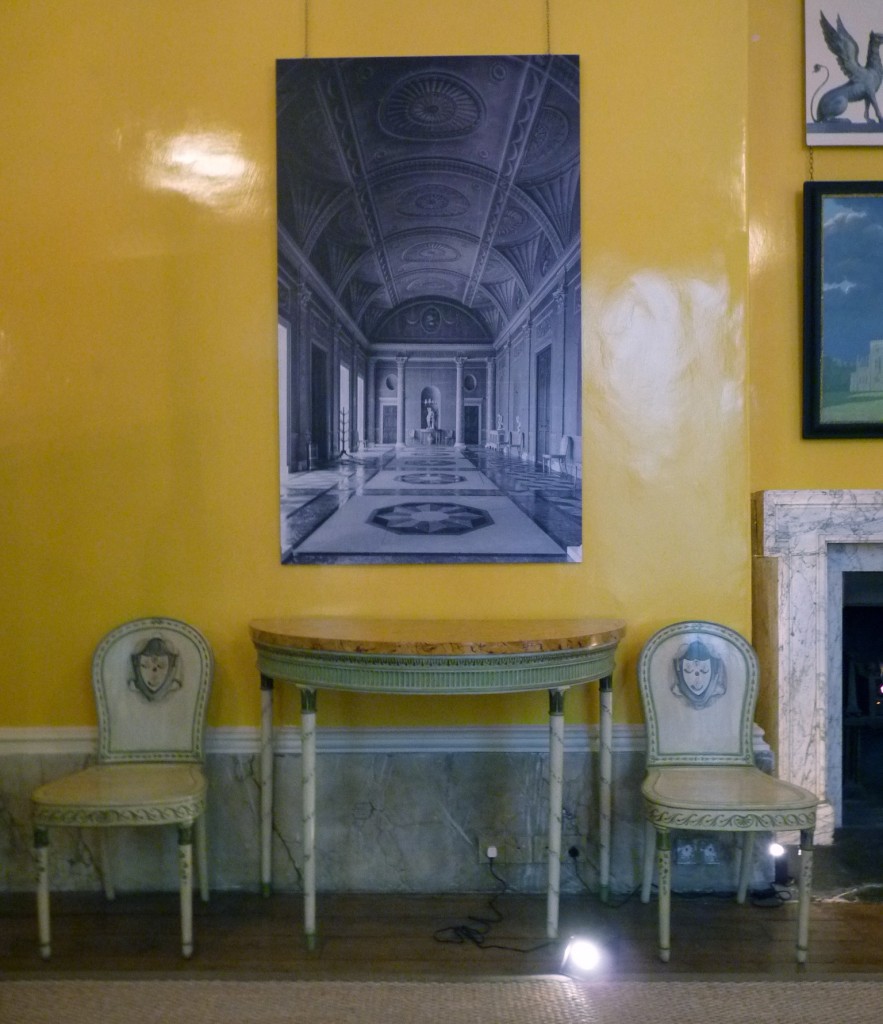
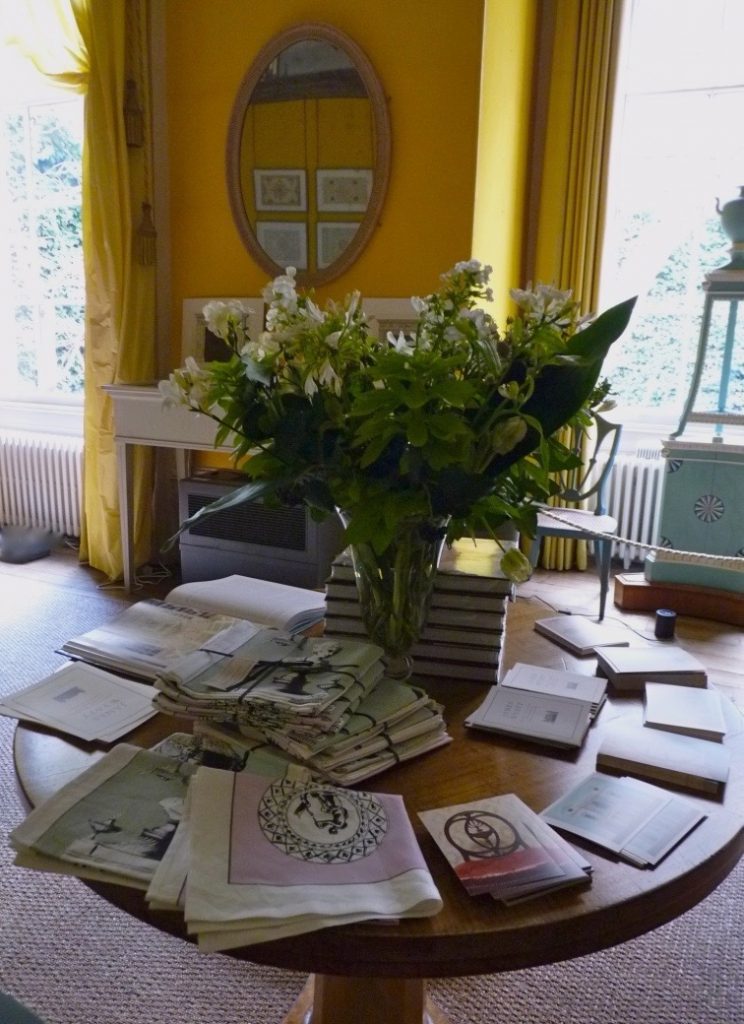
All images : copyright bibleofbritishtaste

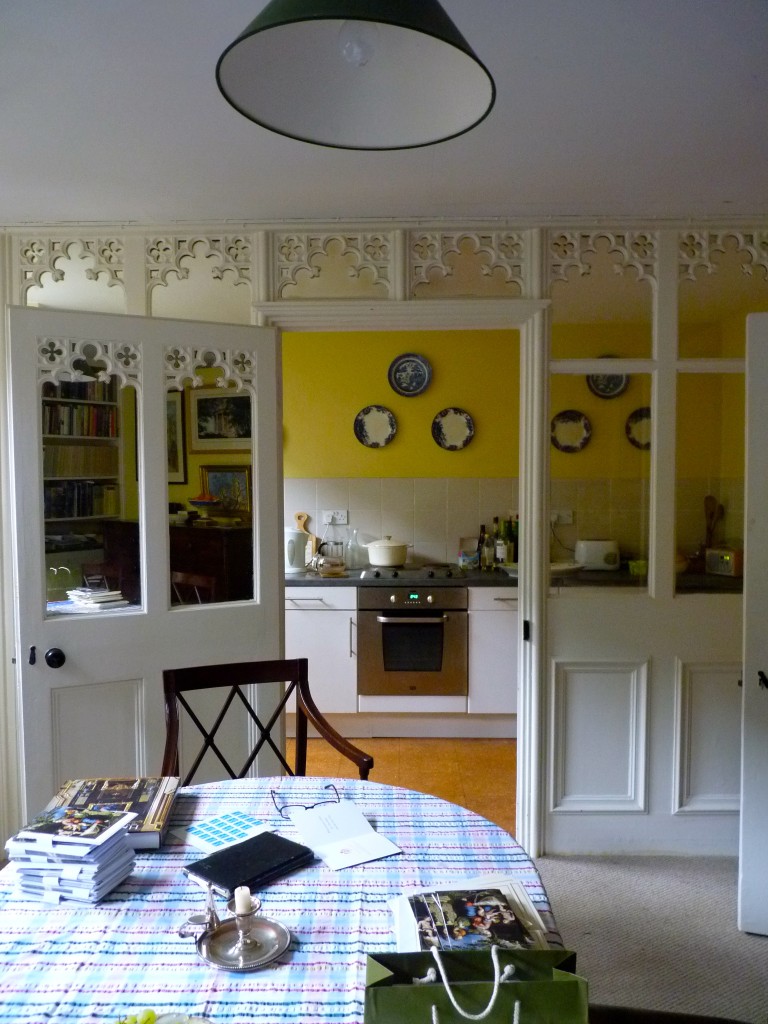
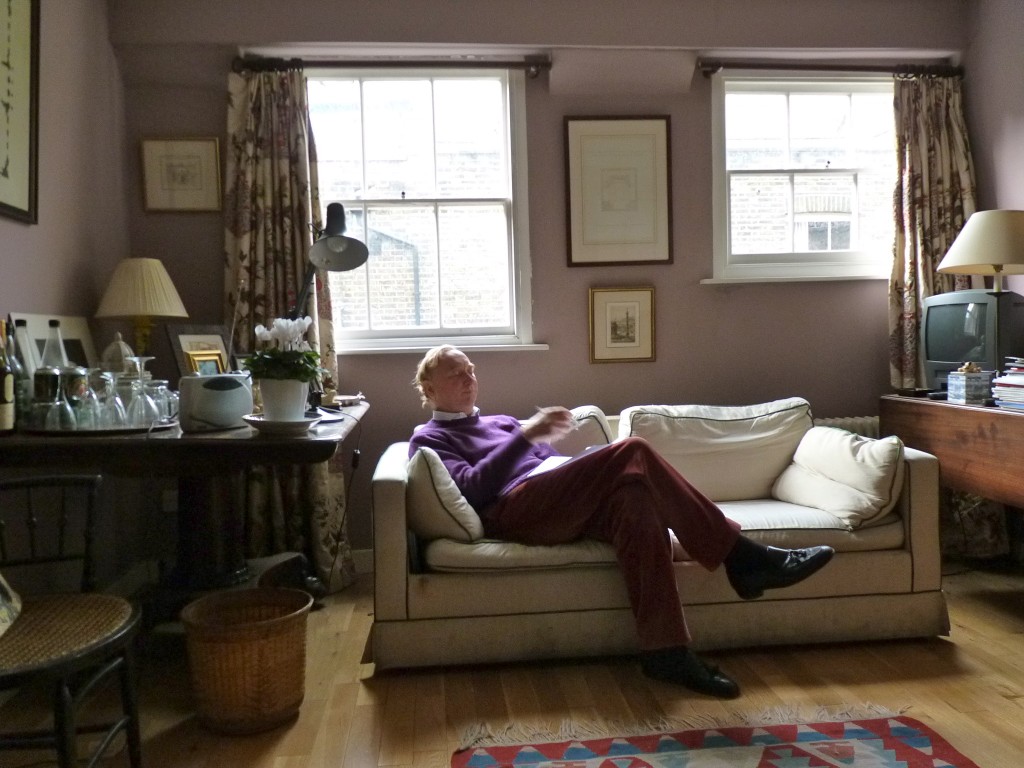


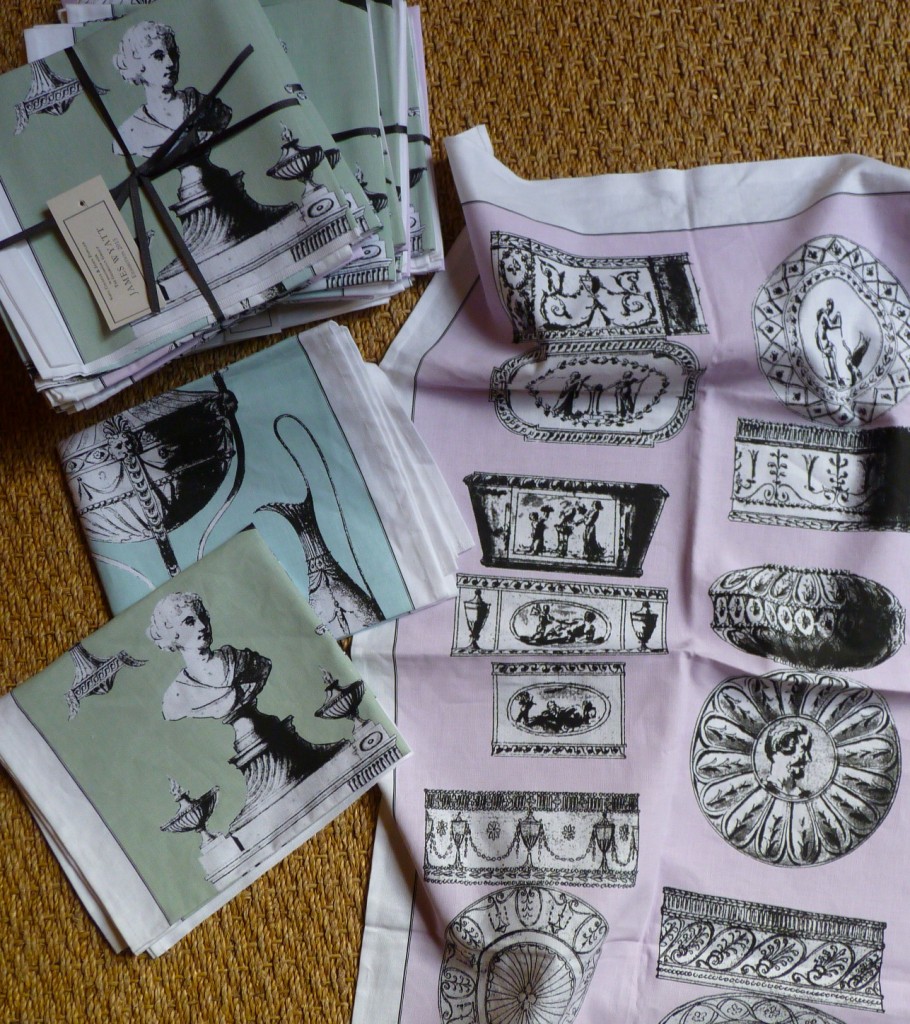
Subject: GBH & CB( Mrs GBH)
Was wonderful to see the work of 2 of the best contempt artist in GB.. Thank you,
Thanks so much for this – I am going to write something about the extraordinary artists Glynn Boyd Harte and Caroline Bullock, their work and their houses, very soon.
Anywhere that used bright yellow and blue is for me! A superbly stylish home. Thank you for showing this.
The interior is absolutely marvelous! One of the most beautiful I have ever seen! I just love the plates!
I spent the past hour reviewing many of your post! Delightful, well done.
Look forward to seeing more. Thank you so much.
Cute and stylish home interior designing and interior furnishing! Beautiful interior decoration too! wish to congrats the interior designers who designed this.
I just wanted to say that I have just stumbled upon your website and absolutely love it. What a thing of beauty. I would love to be updated with new posts, at the same time as I read through all your old posts.
All the best,
Fiona Laird
Thank you for this very kind remark which is much appreciated – I have subscribed you to the site and I will be writing some new posts very soon.RG
Hello! First, I wanted to say I am so happy I found your website – it’s so british and I love all the interiors you feature. And I was so glad to find Ben Pentreath featured you in his book! Your home really resonates within me – therefore, may I be so bold as to ask you were your green paint featured in your study I believe comes from? Oh, and are you planning on writing new posts soon?
Thanks a lot!
Dear Laureline, thank you for your kind remarks, the green paint that you liked is by good old Farrow and Ball, and it is either Saxon or Cooking Apple Green, so-called. And I will be writing some new posts, as soon as I have finished editing an art book that I’ve been writing, it is kind of you to ask, R.